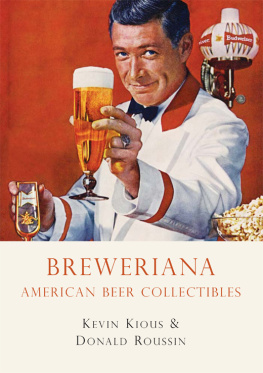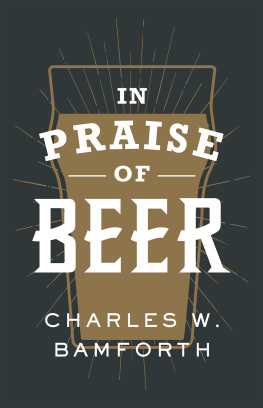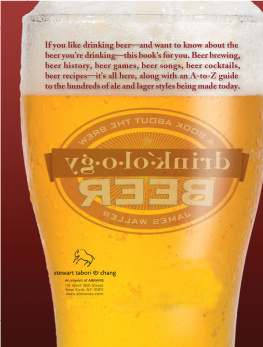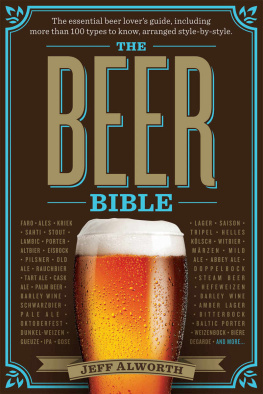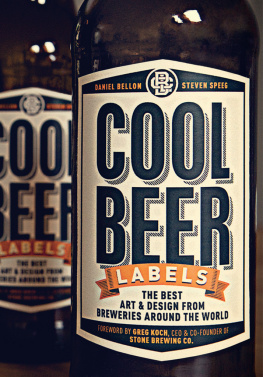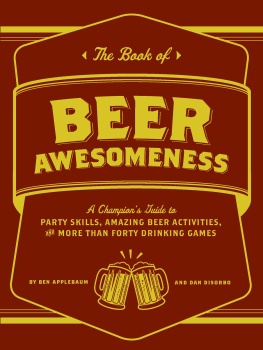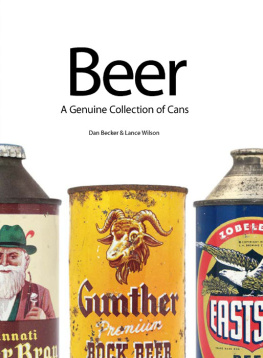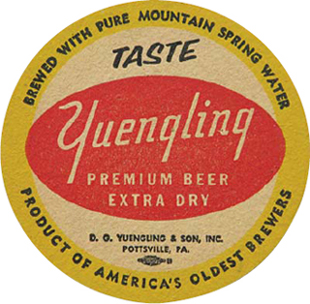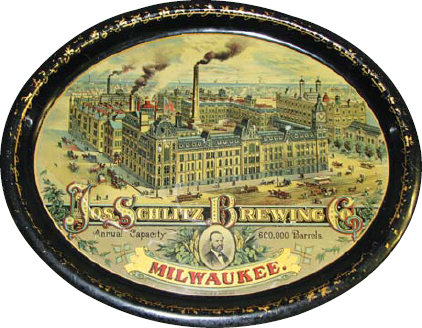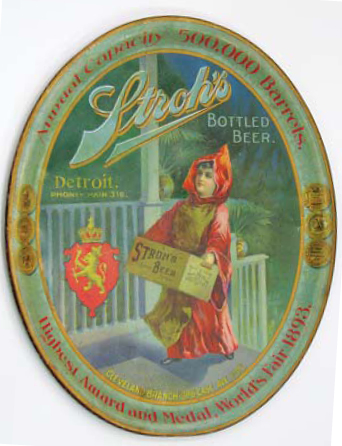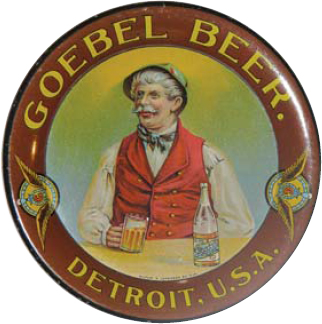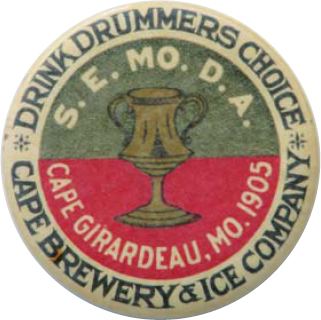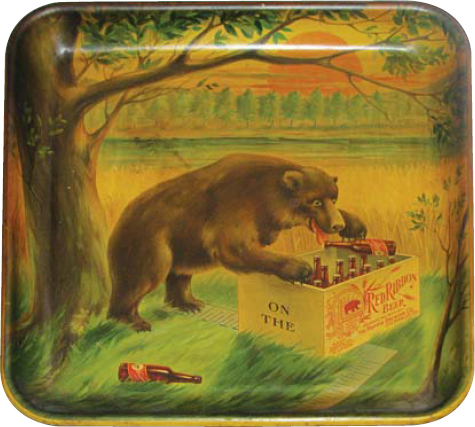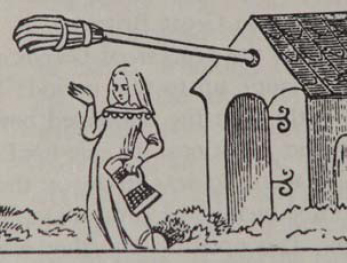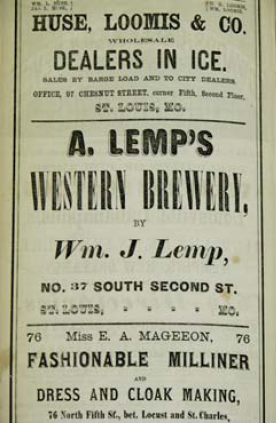BREWERIANA
AMERICAN BEER COLLECTIBLES
Kevin Kious & Donald Roussin
SHIRE PUBLICATIONS
Yuengling, of Pottsville, Pennsylvania, still emphasizes in its advertising that it is Americas oldest brewery.
CONTENTS
This detailed factory scene tray from Milwaukee includes an image of its beer baron namesake, Joseph Schlitz.
INTRODUCTION
B EER . The widely popular beverage, made primarily from water, grain, hops, and yeast has been around for thousands of years. From its crude beginnings in the ancient Middle East, brewing beer has become a huge, worldwide industry. The collecting of items associated with the brewing of beer, however, is of much more recent origin.
Breweriana is a term used to describe the many types of collectable items related to beer. The term was coined in 1969 by author and breweriana collector Will Anderson. He had just published his first book, Andersons Turn-of-the-Century Brewery Directory, and was seeking a term that could be used to encompass all forms of beer stuff. While driving home one day from his job at Readers Digest, breweriana popped into Andersons head. Although some still have difficulty pronouncing it (the correct way is simply to say brewery-Anna), the term has stuck. Anderson titled his next book Beers, Breweries, and Breweriana.
Children often were depicted in pre-Prohibition advertising. A colorful example is this Strohs tray, from Detroit.
The variety of breweriana items is astounding. Brewers have placed their names on an incredible number of surfaces. Many of these items are utilitarian: bottles, cans, coasters, napkins, and matchbooks. Others are ornate: lithographs, etched glasses, reverse-painted images on glass, fine china, and porcelain signs. Some are bizarre: condoms, combs, golf tees, neckties, and foam scrapers.
Not long after Anderson coined the term, the hobby of collecting breweriana exploded in popularity. Due to the huge number of items available, todays enthusiasts can choose collecting specialties that not only match their personal tastes and their display areas, but also their budgets, whether large or small.
This book seeks to explore the many forms of breweriana and tie them into the history of brewing. The journey starts with the invention of beer and shows no sign of abating.
A tip tray from Goebel of Detroit, Michigan, probably meant for use as a coaster.
Utilitarian items like this purse mirror from the Cape Brewery of Cape Girardeau, Missouri, kept the companys name in front of the lady of the houseand the women who ordered beer deliveries for the home.
Its tasty is the message from the beer-drinking bear pictured on this tray from Mathie Brewing of Los Angeles.
THE NEIGHBORHOOD BREWERY
E XACTLY when the first beer advertisement appeared is uncertain, but it is doubtful that early brewers concerned themselves much with such matters. They were too busy performing the arduous task of making beer.
For centuries, brewing was primarily a household duty, usually performed by women, diminutively referred to in the English vernacular as brewsters. Commercial breweries were established gradually, but until 1870 or so, they simply werent very worried about distinguishing themselves from their competitors, except maybe when it came to brewing better beer.
Early tavern advertising consisted primarily of ale stakes, which were poles hung outside of taverns to indicate that beer was available inside. Such signage dates at least to fourteenth-century England, when laws were passed limiting their length to seven feet. At some taverns, ale stakes were decorated; at others, just a broom was used.
Newspaper ads were the primary way early nineteenth-century breweries announced themselves to prospective patrons, although wooden sign boards for ale and porter began appearing in England in the early 1800s. A period English engraving shows a pair of such tavern signs, one for H. Meux and Co.s Entire, the other for Godings XXX Ale. Some posters were used by brewers during this period as well.
As simple as it gets: a block print depicting an ale stake advertising sign affixed onto a tavern, in 1400s England. (From One Hundred Years of Brewing, H. S. Rich & Co; 1903.)
In the antebellum United States, brewers in cities were mostly content to serve their neighborhoods. Breweries also sprang up in many small towns. In any village that had at least a hundred German immigrants, it was likely that at least one of them was brewing beer. While the Germans and their lager beer would grow to dominate the nations brewing industry, many English ale brewers set up shop as well. Brewers in small towns and large cities alike, unless they were on a railroad line or navigable river, were restricted to expanding their market as far as a horse, driver, and wagon could venture from and return to the brewery in a day.
Directory ads, like this 1858 example from Adam Lemp, St. Louis, are some of the few breweriana items from this period that can still be found.
Thus, despite the huge number of breweries in America by 1860 (it has been estimated that there were more than twelve hundred), no breweriana exists for most of them. Neighborhood breweries saw little need to advertise, and any cooperage or equipment they used, even if it has survived, typically bears no inscription.
An exception to this is found with brewers who bottled their beer. Although beer was being bottled as early as the 1500s, bottles were so difficult to obtain that they were considered a luxury. But by the 1850s, more brewers were bottling, and they used bottles embossed with their names. Indeed, bottles still can be found for some brewers for which there is no other evidence of their existence. The use of embossed bottles was not necessarily seen by these breweries as a form of advertising. Instead, it mainly was intended to aid them in getting their bottles back from customers.

